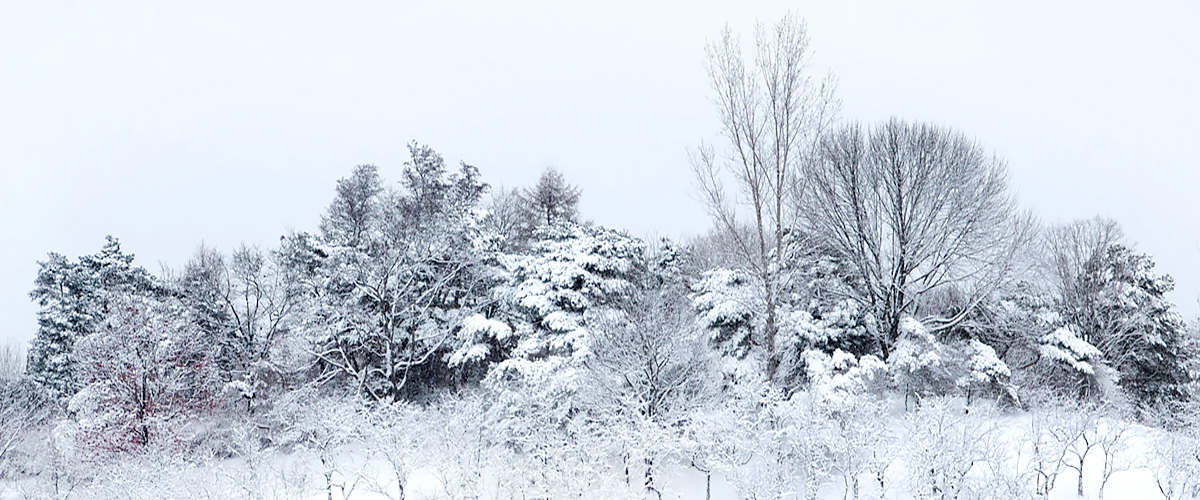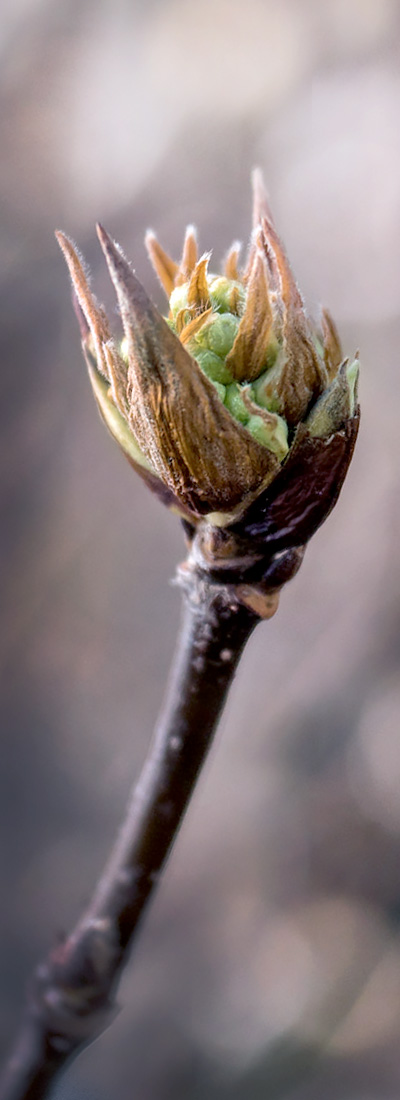After a snowfall, I love spotting the hidden bits of green—reminders of the resilience of nature.

On a winter awe walk, when I’m looking for unexpected beauty, those bits of color bring my attention to the bigger world around me. My work with Budburst, the Chicago Botanic Garden’s community science project, has made me appreciate these moments even more. Budburst encourages everyone to observe and record how plants change with the seasons.
The spots of green usually come from evergreen trees that keep their leaves year-round. In the Midwest, those tend to be conifers, which have modified leaves called needles. I marvel at how conifer branches and needles, laden with snow, hold all that weight. In contrast, I appreciate the exposed branch structure of a deciduous tree, naked of its leaves. The ingenuity of leaf loss is protection, preventing branches from bearing too much weight and breaking when it snows.

All I need is patience, and I will see the world become green again.
Winter pulls back a curtain to reveal insights into the life cycle of plants that we may rush by in our hurry to get inside from the snow or cold. It’s a great time for everyone—especially kids and families—to cultivate an appreciation of nature by thinking about what’s known as phenology. Phenology is the study of the timing of the biological events in plants and animals such as flowering, losing leaves, reproducing, or migrating. You can note such observations at places such as the Chicago Botanic Garden or anywhere you walk.
In the winter, many plants are dormant. This means many of their activities like flowering and fruiting have been paused. I might observe for Budburst that the tree outside my house has no flowers, fruits, or leaves, or that the milkweed plants in my backyard have withered flowers and dispersed all their fruit. By recording what the plants around me are doing, I feel more connected and in tune with nature. It helps me be present in the moment. I am not worried about my dinner plans or dishes; I am focused on what is going on with a plant at a given point in time, and am part of a larger effort to contribute to science.
Even data on when plants are dormant is important. This gives Budburst a baseline for what plants are doing in the winter so that when the first record of blooming or fruiting is entered, the data reflect that change.
On winter walks with friends or family, sometimes I turn phenology observations into a game. I’ll challenge my companions to find parts of plants that remind them of each of the seasons, for instance. Some grasses or wildflowers may have the last bits of flowers or fruits still hanging on from summer. Others may have withered leaves or whole branches encased in ice. Empty branches and dried plants also help me think of the spring to come. I may also walk past dirt patches where I remember a wildflower growing. All I need is patience, and I will see the world become green again.

